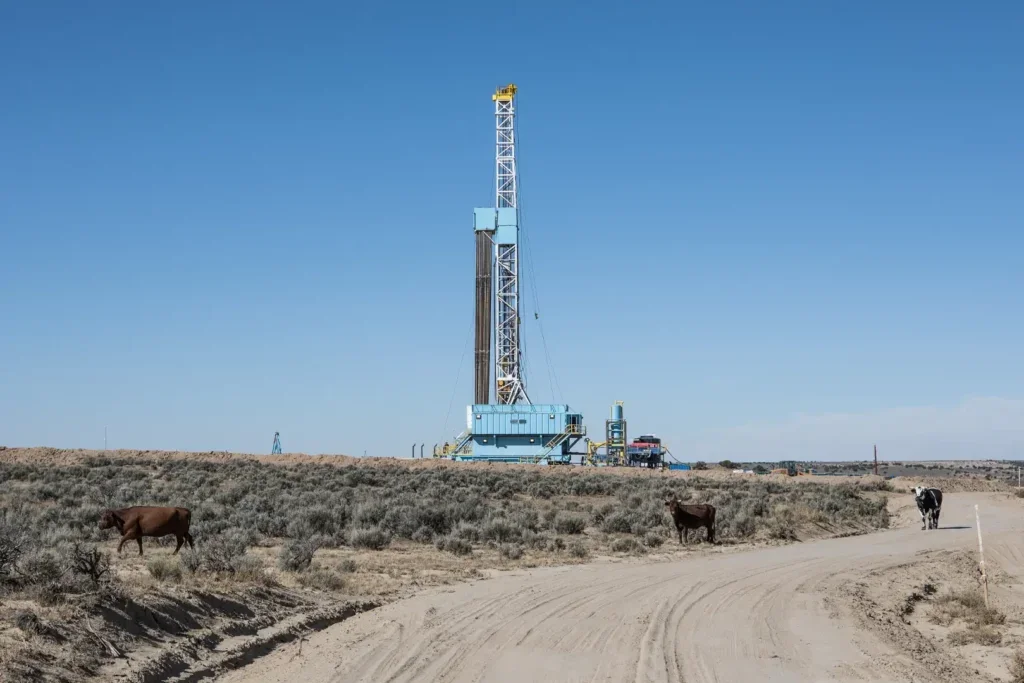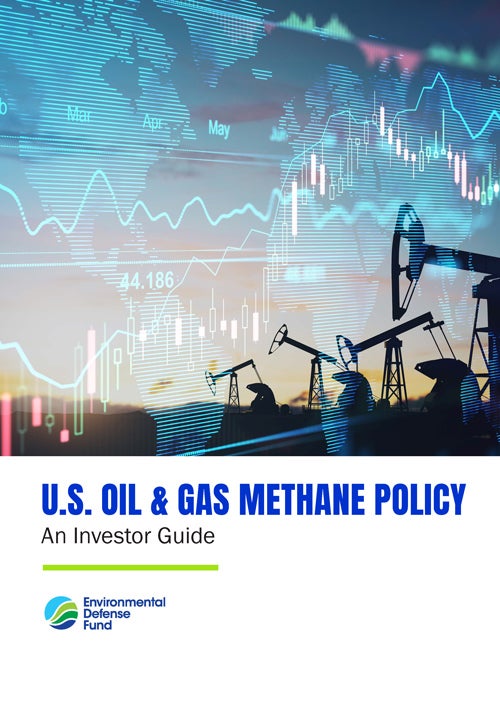- Resources
- U.S. oil & gas methane policy: An investor guide
Resources
U.S. oil & gas methane policy: An investor guide
Published: July 17, 2024 by Sean Hacket, EDF
The world has taken note of the power of cutting methane emissions from the oil and gas industry. Methane is a major source of global warming, with over 80 times the potency of carbon dioxide over 20 years, and the oil and gas industry is a leading contributor of methane emissions. Reducing those emissions has emerged as the quickest, simplest and most affordable way to slow warming now.
Many oil and gas companies have made public pledges to reduce their methane emissions and are participating in initiatives that promote emission accounting and reporting. The financial industry, too, is engaging. Methane management is increasingly being factored into asset valuation, and coalitions of investors representing more than $6 trillion in combined assets have called on oil and gas companies to take deliberate and concrete action on methane emissions.
This guide provides an overview of the regulatory landscape and examines a suite of new and revised rules that address oil and gas methane emissions and waste in the United States.

New and updated oil and gas methane rules
- EPA – Methane Standards
Reduces emissions from new and existing oil and gas facilities through enhanced leak detection and repair, provides flexibility to use cost-effective advanced monitoring technologies, phases out routine flaring and polluting devices, and establishes a new Super-Emitter Program to address large methane leaks - EPA – Methane Emissions Reduction Program, Subpart W
Updates reporting requirements to ensure that emissions reported to the Greenhous Gas Reporting Program are more accurate and based on empirical data, aiding in better benchmarking of company performance and fair assessment of Waste Emissions Charge - EPA – Methane Emissions Reduction Program, Waste Emissions Charge
Annual charge on excess methane emissions reported through Supart W, starting at $900 per metric ton in 2024 and increasing to $1,500 per metric ton by 2026 - Bureau of Land Management – Waste Prevention Rule
Reduces oil and gas waste on federal and Tribal lands through leak detection and repair requirements and royalty payments for certain gas losses - Pipeline and Hazardous Material Safety Administration – Leak Detection and Repair Rule
Enhances pipeline safety and reduces methane emissions through increased leak surveys, expedited repairs, and the development of Advanced Leak Detection Programs using advanced technologies
Methane rules will play a critical role in mitigating financial, reputational, and other climate-related risks for the oil and gas industry. Investors should engage with their portfolio companies to better understand their exposure to these regulations and how they plan to comply.
EDF policy experts stand ready to help the investor community better understand the international climate regulation landscape and find their voice on climate issues.
Investor guide to US oil and gas methane policy
Methane management is increasingly factored into the valuation of oil and gas assets. Investors need a clear picture of updated US methane rules.


